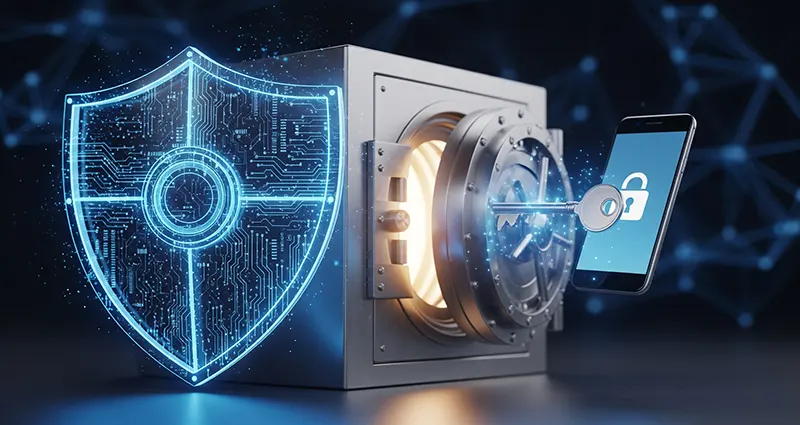In a world where digital banking is the norm, the security of your financial accounts is more critical than ever. While a strong password is a good first step, it is no longer enough to protect against sophisticated cyber threats. This is where two-factor authentication (2FA), also known as multi-factor authentication (MFA), comes in. It provides a vital second layer of security that can be the difference between a secure account and a compromised one. Setting it up is a straightforward process, and it’s one of the most important things you can do to safeguard your money.
What is Two-Factor Authentication?
Two-factor authentication is a security method that requires you to provide two different forms of identification to prove who you are before you are granted access to an account. These two factors typically come from three distinct categories:
- Something you know: This is your password or PIN.
- Something you have: This is a physical object only you possess, such as your phone, a hardware security key, or an authenticator app.
- Something you are: This is a physical characteristic, like your fingerprint or facial scan (biometrics).
By combining two of these factors—for example, your password and a code sent to your phone—2FA ensures that even if a fraudster steals your password, they cannot access your account without the second piece of information.
Why 2FA is a Must-Have for Your Bank Accounts
The benefits of 2FA for online banking are immense and immediate:
- Protects Against Stolen Passwords: The most common form of cyber fraud involves phishing attacks and data breaches that expose passwords. 2FA renders a stolen password useless.
- Deters Identity Theft: By acting as a barrier to unauthorized access, 2FA significantly reduces the risk of identity theft.
- Adds Peace of Mind: Knowing your accounts are fortified with this extra layer of protection allows you to bank with confidence, whether you’re at home or on the go.
How to Set Up 2FA for Your Online Banking
The specific steps may vary slightly depending on your bank, but the process generally follows a similar pattern. Most banks will provide this option within their online portal or mobile app.
Step 1: Log In and Navigate to Security Settings
Using your computer or mobile device, log in to your online banking account. Look for a “Security,” “Profile,” or “Settings” menu. Within this section, you should find an option for “Two-Factor Authentication,” “Multi-Factor Authentication,” or “Security Verification.”
Step 2: Choose Your Verification Method
Your bank will typically offer a few options for the second authentication factor. The most common are:
- SMS Text Message: A one-time passcode is sent to your registered mobile phone number. You enter this code along with your password to log in. This is a very common method, but be aware of SIM-swap fraud, where a fraudster convinces your phone carrier to transfer your number to their device.
- Authenticator App: This is generally considered a more secure option than SMS. You download a separate authenticator app (like Google Authenticator or Microsoft Authenticator) to your phone. The app generates a new, time-sensitive code every 30-60 seconds that you enter during login. These codes are generated on your device and are not susceptible to phone-based hacks.
- Biometric Authentication: Many modern smartphones offer biometric features like fingerprint or facial recognition. The bank’s app can be configured to use your device’s built-in biometrics as a second factor for logging in.
- Push Notification: This is a user-friendly and highly secure option. After you enter your password, the bank’s app sends a push notification to your phone. You simply tap “Approve” to confirm the login attempt.
Step 3: Register and Verify Your Device
Once you choose your preferred method, you will need to register and verify your device. If you chose an authenticator app, you’ll likely be asked to scan a QR code with your phone. If you chose SMS, the bank will send a verification code to your phone to confirm your number.
Step 4: Complete the Setup
After your device is registered, the process is complete. Your bank may ask you to complete one final login to test the new security feature. From this point forward, every time you or someone else attempts to log in from an unrecognized device, they will be prompted for this second form of verification. Setting up 2FA is a small investment of time that offers an enormous return on security. In an era where online fraud is constantly evolving, it is your strongest defense against unauthorized access. Make it a priority to enable this critical security feature on all of your financial accounts today.










